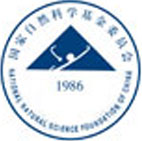 |
PlantRegMap/PlantTFDB v5.0
Plant Transcription
Factor Database
|
| Home TFext BLAST Prediction Download Help About Links PlantRegMap |
Transcription Factor Information
| Basic Information? help Back to Top | |||||||||
|---|---|---|---|---|---|---|---|---|---|
| TF ID | XP_010523097.1 | ||||||||
| Organism | |||||||||
| Taxonomic ID | |||||||||
| Taxonomic Lineage |
cellular organisms; Eukaryota; Viridiplantae; Streptophyta; Streptophytina; Embryophyta; Tracheophyta; Euphyllophyta; Spermatophyta; Magnoliophyta; Mesangiospermae; eudicotyledons; Gunneridae; Pentapetalae; rosids; malvids; Brassicales; Cleomaceae; Tarenaya
|
||||||||
| Family | MYB | ||||||||
| Protein Properties | Length: 314aa MW: 36134.4 Da PI: 5.8217 | ||||||||
| Description | MYB family protein | ||||||||
| Gene Model |
|
||||||||
| Signature Domain? help Back to Top | |||||||
|---|---|---|---|---|---|---|---|
| No. | Domain | Score | E-value | Start | End | HMM Start | HMM End |
| 1 | Myb_DNA-binding | 52.7 | 1e-16 | 14 | 61 | 1 | 48 |
TSSS-HHHHHHHHHHHHHTTTT-HHHHHHHHTTTS-HHHHHHHHHHHT CS
Myb_DNA-binding 1 rgrWTteEdellvdavkqlGggtWktIartmgkgRtlkqcksrwqkyl 48
+g+WT eEd++l+ +++++G g W+ I+ + g++R++k+c++rw +yl
XP_010523097.1 14 KGAWTVEEDKKLIAYIQEYGEGGWRDIPPKAGLKRCGKSCRLRWTNYL 61
79********************************************97 PP
| |||||||
| 2 | Myb_DNA-binding | 50.7 | 4.2e-16 | 67 | 112 | 1 | 48 |
TSSS-HHHHHHHHHHHHHTTTT-HHHHHHHHTTTS-HHHHHHHHHHHT CS
Myb_DNA-binding 1 rgrWTteEdellvdavkqlGggtWktIartmgkgRtlkqcksrwqkyl 48
rg +++eE+++++ +++ G++ W++Ia++++ +Rt++++k++w+++l
XP_010523097.1 67 RGEFSPEEEQIIIMLHASRGNK-WSAIAKHLP-RRTDNEIKNYWNTHL 112
899*******************.*********.************996 PP
| |||||||
| Protein Features ? help Back to Top | ||||||
|---|---|---|---|---|---|---|
| Database | Entry ID | E-value | Start | End | InterPro ID | Description |
| Gene3D | G3DSA:1.10.10.60 | 1.4E-24 | 5 | 64 | IPR009057 | Homeodomain-like |
| PROSITE profile | PS51294 | 17.99 | 9 | 61 | IPR017930 | Myb domain |
| SuperFamily | SSF46689 | 9.36E-30 | 11 | 108 | IPR009057 | Homeodomain-like |
| SMART | SM00717 | 2.0E-14 | 13 | 63 | IPR001005 | SANT/Myb domain |
| Pfam | PF00249 | 2.0E-15 | 14 | 61 | IPR001005 | SANT/Myb domain |
| CDD | cd00167 | 3.29E-10 | 16 | 61 | No hit | No description |
| PROSITE profile | PS51294 | 25.904 | 62 | 116 | IPR017930 | Myb domain |
| Gene3D | G3DSA:1.10.10.60 | 5.5E-27 | 65 | 117 | IPR009057 | Homeodomain-like |
| SMART | SM00717 | 1.6E-15 | 66 | 114 | IPR001005 | SANT/Myb domain |
| Pfam | PF00249 | 3.0E-15 | 67 | 112 | IPR001005 | SANT/Myb domain |
| CDD | cd00167 | 4.84E-11 | 69 | 112 | No hit | No description |
| Gene Ontology ? help Back to Top | ||||||
|---|---|---|---|---|---|---|
| GO Term | GO Category | GO Description | ||||
| GO:0003677 | Molecular Function | DNA binding | ||||
| Sequence ? help Back to Top |
|---|
| Protein Sequence Length: 314 aa Download sequence Send to blast |
MSRKPCCSGE GLKKGAWTVE EDKKLIAYIQ EYGEGGWRDI PPKAGLKRCG KSCRLRWTNY 60 LKPDIKRGEF SPEEEQIIIM LHASRGNKWS AIAKHLPRRT DNEIKNYWNT HLKKRLIEQD 120 VDPLTRKQPR LSSISPRSMP SSSDFNTKPE VSEGYLSRKK GSSSSDFTSR LLNKVATRVT 180 SMRGFLKDSL EGSLTNHATS SSLPYEHDHY QDMATDDFHL LSQSSLYHEL ENELQTVGTS 240 FDCQECEFSQ FYNSFHQNEA ENKNSFEYSS NDDHMMSDIS QDVSTVTVSE DMICRMDDWC 300 DMEDVLDLTC MSIW |
| 3D Structure ? help Back to Top | ||||||
|---|---|---|---|---|---|---|
| PDB ID | Evalue | Query Start | Query End | Hit Start | Hit End | Description |
| 1h8a_C | 1e-26 | 12 | 116 | 25 | 128 | MYB TRANSFORMING PROTEIN |
| Search in ModeBase | ||||||
| Functional Description ? help Back to Top | ||||||
|---|---|---|---|---|---|---|
| Source | Description | |||||
| UniProt | Major regulator of short-chained aliphatic glucosinolates (GLSs) biosynthesis. Together with MYB29/HAG3 and MYB76/HAG2, promotes aliphatic glucosinolate biosynthesis but represses indolic glucosinolate biosynthesis. Prevents insect performance (e.g. lepidopteran insect Mamestra brassicae and Spodoptera exigua) by promoting glucosinolates. {ECO:0000269|PubMed:17420480, ECO:0000269|PubMed:17521412, ECO:0000269|PubMed:18042203, ECO:0000269|PubMed:18446225, ECO:0000269|PubMed:20348214, ECO:0000269|PubMed:23580754, ECO:0000269|PubMed:23792303, ECO:0000269|PubMed:23943862}. | |||||
| Cis-element ? help Back to Top | |
|---|---|
| Source | Link |
| PlantRegMap | XP_010523097.1 |
| Regulation -- Description ? help Back to Top | ||||||
|---|---|---|---|---|---|---|
| Source | Description | |||||
| UniProt | INDUCTION: Slightly induced by glucose, gibberellic acid (GA), jasmonic acid (JA) and salicylic acid (SA). Transiently induced in inflorescence by mechanical stimuli such as touch or wounding, including herbivory-wounding. Up-regulated by sulfur-deficient stress. {ECO:0000269|PubMed:16463103, ECO:0000269|PubMed:17521412, ECO:0000269|PubMed:23115560, ECO:0000269|PubMed:23792303}. | |||||
| Regulation -- PlantRegMap ? help Back to Top | ||||||
|---|---|---|---|---|---|---|
| Source | Upstream Regulator | Target Gene | ||||
| PlantRegMap | Retrieve | - | ||||
| Annotation -- Protein ? help Back to Top | |||||||
|---|---|---|---|---|---|---|---|
| Source | Hit ID | E-value | Description | ||||
| Refseq | XP_010523097.1 | 0.0 | PREDICTED: transcription factor MYB29-like | ||||
| Swissprot | Q9SPG2 | 2e-98 | MYB28_ARATH; Transcription factor MYB28 | ||||
| TrEMBL | A0A0E3EG29 | 4e-99 | A0A0E3EG29_BRANA; High aliphatic glucosinolate 1 | ||||
| TrEMBL | A0A398A9U0 | 3e-99 | A0A398A9U0_BRACM; Uncharacterized protein | ||||
| TrEMBL | M4I2N1 | 3e-99 | M4I2N1_BRAJU; R2R3 DNA binding transcription factor MYB28-4 | ||||
| STRING | XP_010523097.1 | 0.0 | (Tarenaya hassleriana) | ||||
| Orthologous Group ? help Back to Top | |||
|---|---|---|---|
| Lineage | Orthologous Group ID | Taxa Number | Gene Number |
| Malvids | OGEM3787 | 18 | 60 |
| Best hit in Arabidopsis thaliana ? help Back to Top | ||||||
|---|---|---|---|---|---|---|
| Hit ID | E-value | Description | ||||
| AT5G61420.2 | 1e-97 | myb domain protein 28 | ||||



